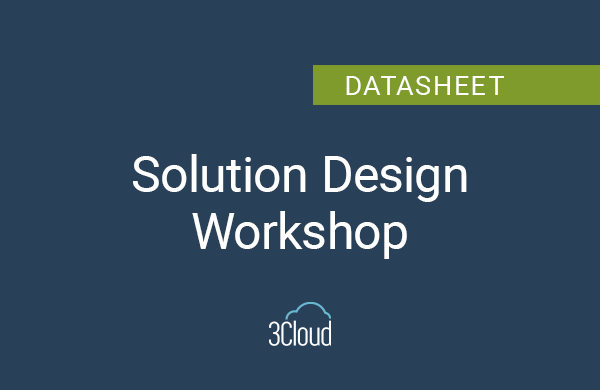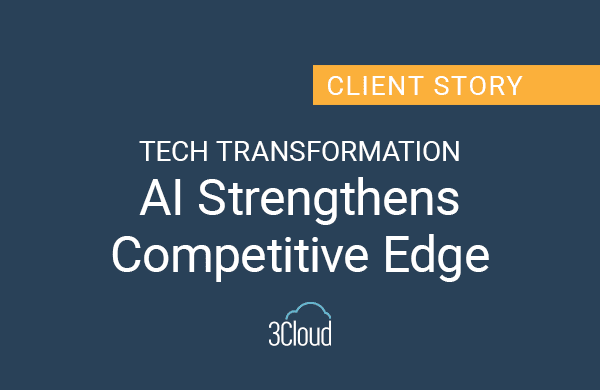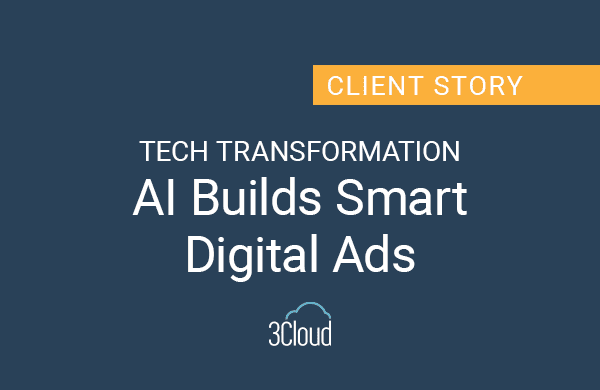At 3Cloud (formerly Polaris), our enthusiastic adoption of the Scaled Agile Framework (SAFe®) dates back before 2014. SAFe enables us to consistently deliver modern software solutions at budget and done right, on time, the first time. For our team coaching services, it means we’re advising you on the practices and principles that drive not only 3Cloud development projects but our entire workplace culture, including senior leadership.
Scaled Agile Inc., the team behind SAFe, practices what they preach and ensures the framework itself is Agile and reflective of community feedback and market developments. Below, we’ll break things down to help you stay up to date with us on SAFe 5.0, released in January 2020, in addition to covering the basics for anyone considering the framework for their enterprise.
What Is SAFe?
SAFe is arguably the world’s leading framework for enterprise agility. Pioneered by Dean Leffingwell, it is designed to help organizations implement Lean and Agile methods at scale. SAFe provides prescriptive, open source guidance for the individual roles, teams, activities, and artifacts necessary to scale Agile from the team to program to enterprise level. Scaled Agile, Inc. also offers paid training and certifications.
SAFe’s guidance is divided into three layers, each aligned to a level of abstraction matched to project scope within an enterprise. Actionable work is driven top down through cascading backlog queues and a simple, well-defined taxonomy.
The Portfolio layer defines a framework for managing an enterprise project portfolio. The portfolio is implemented as a backlog of business and architectural “epics”, high-level narratives aligned to strategic investment themes. Approved epics are delivered to the Program layer for further exposition and scheduling for implementation.
The Program layer defines procedures for turning approved epics into proper product plans and is responsible for delivering a value stream to the organization. Activities include developing product visions, a backlog of high level “features” to be implemented, product roadmaps, and iterative release plans. Project features are batched up and delivered to the Team layer for implementation.
The Team layer prescribes a combination of Scrum management practices and XP technical practices to empower Agile development teams to turn features into “user stories” and deliver working, valuable software in two-week sprints.
If you’ve worked with us before–to modernize your custom software applications or to leverage our Agile, DevOps, and Azure Cloud Services consulting–you know we live and breathe SAFe. Like the framework itself, the SAFe community is constantly discovering and adapting. So we wanted to share recent updates on SAFe 5.0 and how it builds on the basic framework outlined above.
No Better Time for Business Agility: SAFe 5.0
No one could have predicted the wide-reaching socioeconomic impact of COVID-19. But the January 2020 release of Scaled Agile Framework 5.0 was prescient in that it is full of principles and actionable practices that can help enterprises navigate uncertainty.
The biggest update with 5.0 is the introduction of a new goal: Business Agility, which represents the ability to compete and thrive in the digital age by quickly adapting to market changes and emerging opportunities. SAFe’s online resources also cover how to adapt core Agile principles–like the importance of face-to-face meetings and standups–for remote work and distributed teams.
SAFe outlines seven core competencies to achieve Business Agility, including two brand-new competencies–Continuous Learning Culture and Organizational Agility:
- Lean-Agile Leadership – actively lead change and model Lean-Agile values
- Team and Technical Agility – build high-performing, cross-function teams who in turn build business solutions
- Agile Product Delivery – make the customer the center of your product strategy
- Enterprise Solution Delivery – apply Lean system engineering
- Lean Portfolio Management – decentralize decision-making and align, strategy, funding, and execution
- Organizational Agility – Introduce Lean business operations
- Continuous Learning Culture – make exploration and learning a core value for everyone
Why You Should Care About the Scaled Agile Framework
In SAFe’s early days, Agile had become the first choice for development teams building software, but true enterprise agile transformations was still rare. Adoption inside many enterprises can stall due to conflict with traditional waterfall business planning and budgeting processes. More and more organizations, however, are making the change and adopting Lean and Agile methodologies. Here are the reasons we believe SAFe succeeds at driving full-scale enterprise Agile adoption.
Simple – The epic–feature–user story taxonomy is the heart of this framework and the key to tracing efforts through these layers to achieve synchronization, collaboration, and business value delivery. It’s simple to learn and easy to teach–key ingredients to cultural transformation.
Comprehensive – The layered abstractions chosen for SAFe provide just the right amount of focus at the executive, product management, and development team levels. The roles and procedures are well defined and cover the complete set of activities needed to manage a portfolio of enterprise IT projects. SAFe will educate and push Agile up into the very heart of the enterprise.
Actionable – SAFe provides open source, concrete procedures and detailed steps on how to get each layer up and running. In our own experience, it’s both approachable and actionable.
Documented – Leffingwell’s book, Agile Software Requirements, is essentially a playbook for enterprise Agile transformation and describes every detail of the SAFe framework. In addition to training opportunities, the SAFe website hosts articles on key competencies like Business Agility, as well as implementation roadmaps, community resources, and more.
Proven in the field – The framework has been through numerous iterations, and has evolved through countless large-scale adoptions at real-world enterprises both large and small. The results are measurable, too. By using SAFe on two major projects, Cisco reported improved employee satisfaction coupled with a 40% decrease in critical and major defects.
SAFe can power a natural and necessary evolution of Agile upwards into any enterprise, unlocking efficiency, resilience, and newfound solutions. The adoption of SAFe principles is never done; instead, it should be constantly evolving.
Note: SAFe and Scaled Agile Framework are registered trademarks of Scaled Agile, Inc.




